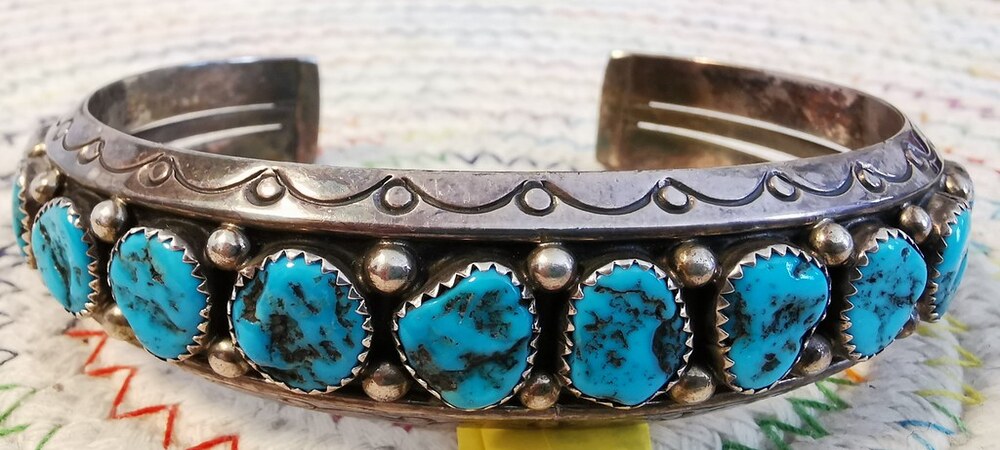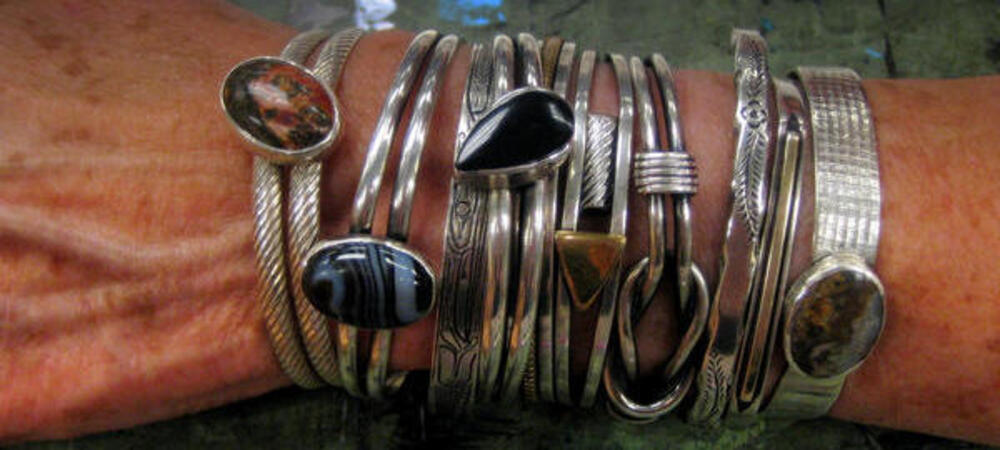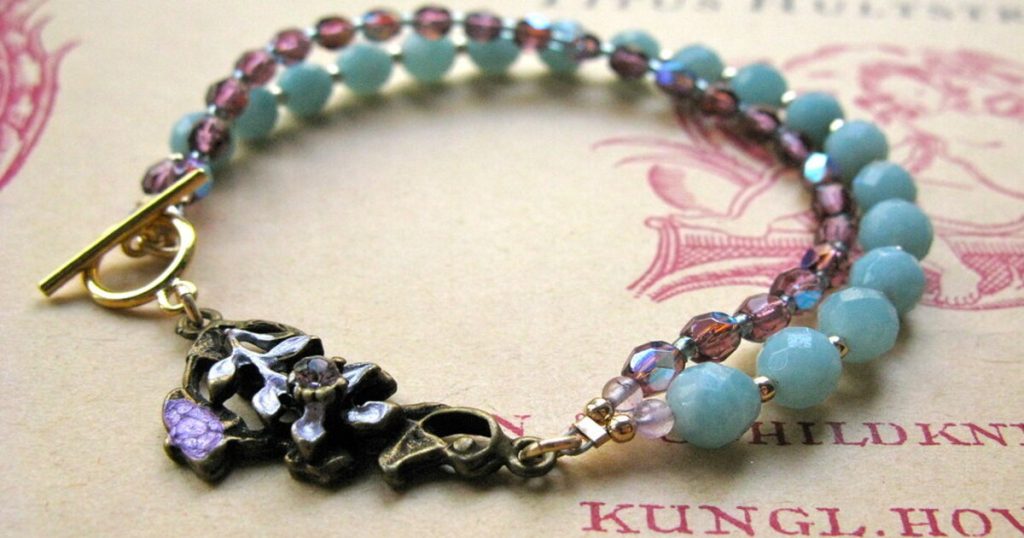When it comes to accessorizing, bracelets are a timeless choice that can add flair and personality to any outfit. However, finding the perfect fit is crucial for both comfort and style. Understanding STANDARD BRACELET LENGTH is essential for selecting the right size that complements your wrist perfectly. In this comprehensive guide, we’ll delve into the various standard bracelet lengths, how to measure your wrist accurately, and tips for choosing the ideal bracelet size.
How to Measure Your Wrist for Bracelet Sizing
To measure your wrist for bracelet sizing, you’ll need a flexible measuring tape or a strip of paper and a ruler. Follow these steps
- Wrap the measuring tape or strip of paper snugly around your wrist where you typically wear your bracelet. Make sure it’s not too tight or too loose, just comfortably snug.
- If you’re using a strip of paper, mark where the end meets the rest of the strip.
- Lay the measuring tape or strip of paper flat and use a ruler to measure the length from the starting point to the mark.
- Note down the measurement in inches or centimeters. This is your wrist size.
- Depending on how you like your bracelets to fit, you may add some extra length to your wrist size to ensure a comfortable fit. For a snug fit, add about ¼ to ½ inch (0.6 to 1.3 cm). For a looser fit, add ¾ to 1 inch (1.9 to 2.5 cm).

Understanding Standard Bracelet Lengths
Understanding STANDARD BRACELET LENGTH can help you choose the right size for your wrist. Here are the typical lengths for different types of bracelets
- Extra Small (XS): This size is usually around 6 inches (15.2 cm) in length. It’s suitable for wrists with a circumference of approximately 5.5 to 6 inches (14 to 15.2 cm).
- Small (S): A small bracelet typically measures around 6.5 inches (16.5 cm). It fits wrists with a circumference of about 6 to 6.5 inches (15.2 to 16.5 cm).
- Medium (M): Medium-sized bracelets are typically around 7 inches (17.8 cm) long. They are suitable for wrists with a circumference of approximately 6.5 to 7 inches (16.5 to 17.8 cm).
- Large (L): Large bracelets usually measure around 7.5 inches (19.1 cm). They fit wrists with a circumference of about 7 to 7.5 inches (17.8 to 19.1 cm).
- Extra Large (XL): Extra-large bracelets are typically around 8 inches (20.3 cm) in length. They are suitable for wrists with a circumference of approximately 7.5 to 8 inches (19.1 to 20.3 cm).
- These are general guidelines, and actual bracelet lengths may vary depending on the style and design of the bracelet. It’s essential to measure your wrist accurately and consider how you prefer your bracelets to fit when choosing the right size.
Factors to Consider for Comfortable Wear
When selecting a bracelet for comfortable wear, consider the following factors
- Size and Fit: Ensure the bracelet is the right size for your wrist. It should be snug enough to stay in place but not too tight to restrict movement or circulation. Refer to your wrist measurement and the bracelet’s sizing guidelines.
- Material: Choose materials that feel comfortable against your skin. Materials like soft leather, smooth metals (such as sterling silver or gold), and flexible beads (like silicone or certain types of gemstones) are often comfortable to wear for extended periods.
- Weight: Consider the weight of the bracelet, especially if you’ll be wearing it for long periods. Heavy bracelets may feel cumbersome and uncomfortable, while lightweight ones are often more comfortable for all-day wear.
- Clasp or Closure Type: Opt for a clasp or closure that is easy to fasten and secure. Avoid clasps that are difficult to operate or prone to coming undone, as they can cause discomfort or even loss of the bracelet.
- Flexibility and Adjustability: Flexible bracelets or those with adjustable lengths provide a custom fit, enhancing comfort. Look for bracelets with adjustable clasps, sliding knots, or stretchable materials.
- Smooth Edges and Design: Bracelets with smooth edges and designs are less likely to snag on clothing or irritate the skin. Avoid bracelets with sharp edges or rough textures that may cause discomfort or scratches.
- Allergies and Sensitivities: If you have metal allergies or sensitivities, choose hypoallergenic materials like titanium, surgical stainless steel, or certain types of plastics. Be mindful of any known allergies to ensure comfortable wear.
- Breathability: For bracelets that cover a significant portion of your wrist, consider the breathability of the material, especially in hot or humid conditions. Breathable materials like mesh, fabric, or perforated leather can prevent discomfort from sweating.

Adjusting Bracelet Lengths: Tips and Tricks
Adjusting bracelet lengths can ensure a comfortable fit and prevent them from slipping off or feeling too tight. Here are some tips and tricks for adjusting bracelet lengths
- Add or Remove Links: For metal bracelets with link designs, you can adjust the length by adding or removing links. Most jewelers offer this service, or you can purchase link removal tools to do it yourself. Be sure to maintain symmetry by adjusting an equal number of links on each side of the clasp.
- Use Extender Chains: Extender chains are small additional chains attached to the clasp of the bracelet. They allow for adjustable length, making it easy to customize the fit. Look for bracelets with extender chains, or purchase extender chains separately and attach them to existing bracelets.
- Utilize Adjustable Closures: Some bracelets feature adjustable closures that allow you to change the length by sliding a mechanism along the bracelet chain. These closures often use sliding knots, sliding beads, or sliding clasps to adjust the length quickly and easily.
- Create Knots: For fabric or cord bracelets, you can adjust the length by tying knots in the material. Experiment with different knot styles, such as sliding knots or adjustable macramé knots, to achieve the desired length. Ensure the knots are secure but not too tight to maintain comfort.
- Attach Additional Clasps: If the bracelet has multiple clasps or attachment points, you can adjust the length by attaching the clasp to a different point on the bracelet chain. This allows for minor length adjustments without permanently altering the bracelet.
- Seek Professional Assistance: If you’re unsure about adjusting the bracelet yourself or if it requires complex alterations, seek assistance from a professional jeweler or artisan. They can provide expert advice and make precise adjustments to ensure a perfect fit.
- Consider Magnetic or Stretchable Bracelets: Magnetic bracelets or those made with stretchable materials like elastic cords automatically adjust to fit the wearer’s wrist comfortably. These types of bracelets are convenient for everyday wear and don’t require manual adjustments.
Conclusion
In conclusion, understanding STANDARD BRACELET LENGTH is essential for selecting the right size and ensuring comfortable wear. Standard bracelet lengths typically range from extra small (XS) to extra large (XL), with each size corresponding to a specific wrist circumference. It’s crucial to measure your wrist accurately and consider factors such as material, weight, closure type, and flexibility when choosing a bracelet for comfortable wear.
Adjusting bracelet lengths can be achieved through various methods, including adding or removing links, using extender chains, utilizing adjustable closures, creating knots, attaching additional clasps, or opting for magnetic or stretchable bracelets. By considering these factors and employing the appropriate adjustments, you can customize the length of your bracelet to fit your wrist comfortably and enjoy wearing it for any occasion.
